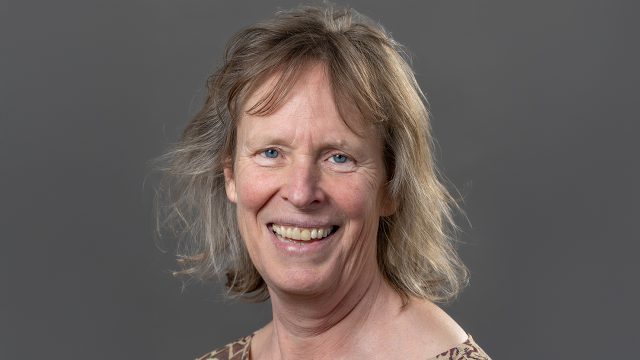
Our Focus
Development of cancer is generally due to errors that occur in cellular pathways. Understanding the mechanisms will help to determine where the errors occur and how they can be treated. We use a combination of biochemical, biophysical and structural methods to provide insights in molecular mechanisms and targets for drug design studies. We focus on ubiquitin conjugation pathways in DNA repair and on DNA mismatch repair.
We combine quantitative biochemical analysis, Cryo-EM single-particle analysis and AI using AlphaFold to study a series of DNA repair complexes for TC-NER, mismatch repair, TLS and dsDNA break repair and mechanistic analyses in ubiquitin conjugation.
About Titia Sixma

Titia Sixma
My Research
Titia K. Sixma received her Ph.D. training in the group of Wim Hol at Groningen University determining crystal structures of a bacterial protein toxin homolog of cholera toxin, LT and she worked as a post-doctoral fellow in the group of Paul Sigler at Yale University. Currently she is group leader (since 1994) at the Netherlands Cancer Institute in Amsterdam. She uses structural biology/biochemistry and biophysical analysis to study the regulation of cellular signaling processes. The group is particularly interested in the proteins involved in ubiquitin conjugation and DNA mismatch repair. Since 2004 she has a part-time appointment as professor at the ErasmusMC in Rotterdam.
Titia Sixma is interested in the regulation of genome maintenance. Her approach is mechanistic, using high resolution methods in well-defined systems, that allow quantitative analysis and high resolution detail, thus providing insight in specific function and regulation, thus yielding important insights for drug development. She focusses particularly on the role of ubiquitin signalling and DNA mismatch repair
Major breakthroughs include the elucidation of DNA mismatch repair conformational states and the structure solution of AChBP, the first Cys-loop receptor ligand binding domain structure. More recent highlights were the elucidation of a novel chromatin mark on H2A after DNA damage, the definition of allosteric regulatory mechanisms for deubiquitinating enzymes and the characterization of specificity in ubiquitin E3 ligases DNA damage response and LUBAC.
Awards
2008: Elected member of the KNAW (Royal Netherlands Academy of Arts and Sciences)
2008:Elected member of Academiae Europaea
2004: Elected member of EMBO
1994: NVBMB Prize
Key Publications
Fernandez-Leiro R, Bhairosing-Kok D, Kunetsky V, Laffeber C, Winterwerp HHK, Groothuizen F, Fish A Lebbink JHG, Friedhoff P, Sixma TK, Lamers MH. (2021) The selection process of licensing a DNA mismatch for repair. Nat Struct Mol Biol Apr;28(4):373-381.
Dharadhar S, van Dijk WJ, Scheffers S, Fish A, Sixma TK (2021) Insert L1 is a central hub for allosteric regulation of USP1 activity, EMBO Rep. 22(4) e51749
Kim RQ, Geurink PP, Mulder MPC, Fish A, Ekkebus R, El Oualid F, van Dijk WJ, van Dalen D, Ovaa H, van Ingen H, Sixma TK. (2019) Kinetic analysis of multistep USP7 mechanism shows critical role for target protein in activity. Nat Commun. 10(1):231.
Sahtoe DD, van Dijk WJ, Ekkebus R, Ovaa H, Sixma TK. (2016) BAP1/ASXL1 recruitment and activation for H2A deubiquitination. Nat Commun. 7, 10292.
Mattiroli F, Vissers JHA, van Dijk WJ, Ikpa P, Citterio E, Vermeulen W, Marteijn JA, Sixma TK. (2012) RNF168 Ubiquitinates K13-15 on H2A/H2AX to Drive DNA Damage Signaling. Cell. 150, 1182-95.
Members
| Titia Sixma Group leader | Andrea Murachelli Postdoc fellow | Yvette Stijf-Bultsma Technician |
| Shun-Hsiao Lee Post Doc | Jessica Ho PhD Student | Kaustav Majumder PhD Student |
| Niels Keijzer PhD student | Nina van Lil OIO | Pratiksha Mall PhD student |